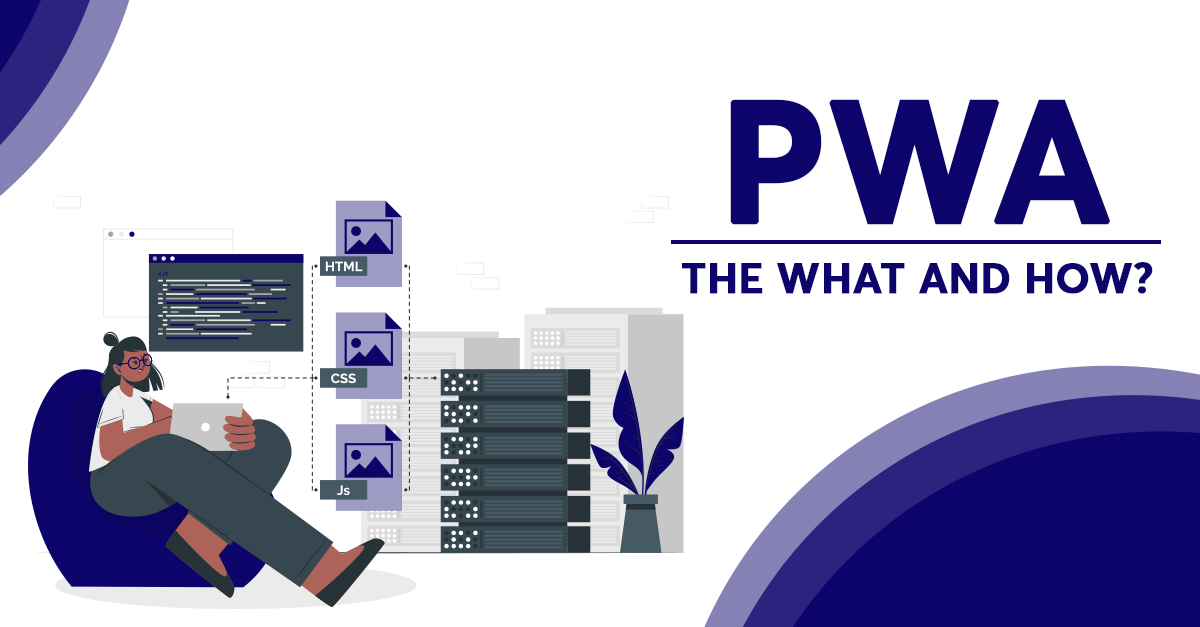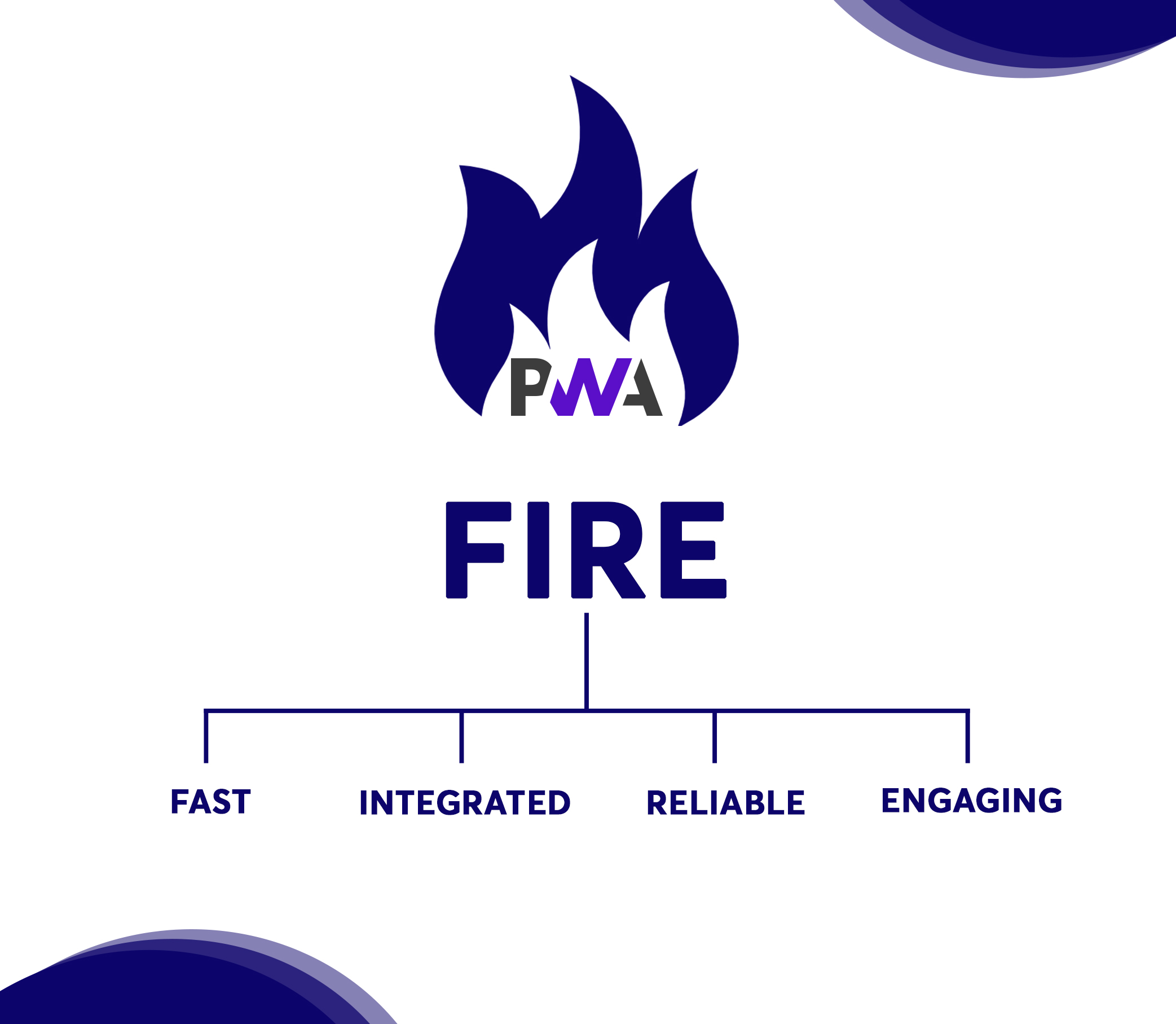Progressive Web Apps are the latest bells that are whizzing around the technological world. Quite rightly so, because of its swift compatibility and demand, The PWA has successful growing support and faster consumer engagement because of its adaption and deliverance.
Many tech giants such as Twitter, Flipkart, OLX, etc., are thriving by investing more in expert developers to make their websites better with PWA.
Progressive web apps create a massive impact from the consumer’s point of view and the business’ end. With almost every famous company and media house producing their PWA, it is essential to know PWAs.
PWA: The what and how

Progressive Web Apps are the enhanced version of web apps built using codes of HTML, CSS, and JavaScript. It is built to perform on any standard browser on desktops and mobile devices. The functions of a progressive web app are similar to a native app. It combines the best experiences of an app and website while keeping the engagement rate higher through fast loading with minimum space requirements.
PWAs are fast, engaging, and reliable. Companies use it because, from a business perspective, they are inexpensive to maintain and test. Developers in PWAs find it simple to develop the code and test it compared to the native apps, which sometimes leads to a lot of technical debt(errors in code are challenging to fix).
An application is a PWA if it follows particular installation criteria like working offline and addition on the home screen. The metadata(data that provides other data) is vital for the app to be added to the home screen device as PWAs. The data in PWA is stored in web storage, service workers, indexed data-based and app cache. The implementation of PWA in business positively impacted revenue, traffic and engagement rate and more time being spent on the web page. Some of the PWAs benefits are smaller storage and faster interaction with offline capabilities, and no time-consuming updates.
What makes PWAs unique?
A recent study report states that native apps are highly concentrated, meaning consumers spend about 78% of their time only on their top 3 priority apps. Users feel that native apps occupy storage, time, and cost. Hence only prevalent apps succeed in installation. The difference between native apps and PWA is the capability. Native apps start up quickly, work offline, show notifications and sync in the background, and access sensors like camera and microphone. Though the reach of native apps is marginally limited, requiring a different version for each platform. A progressive Web app has the best of both worlds, with the combination of native app and the web app, providing a fantastic user interface. It is integrated and earns a place on the home screen without worrying about the reach and storage.
The term progressive web app means radically improving the quality of an end to end-user experience for a consumer. To have an enhanced experience, PWA focuses on four things:- FIRE (Fast, Integrated, Reliable, and Engaging.)

Fast: “Time is money.” This quote is quite famous, and it is true. Users expect apps to load quickly and have a smoother interface. A recent study showed that 53% of users abandoned a site that took more than 3 seconds to load, thus increasing the bounce rate and affecting revenue. PWA focuses on making the app faster without compromising on the user experience.
Integrated: PWA integrates the web page into an app-like interface. Users do not have to go on web browsers to reach a website; it can be integrated directly into the home screen. Hence providing ease in reachability and feel of a native app.
Reliable: A cute image of the ‘downauser’ is seen on web pages when disconnected from the internet. The presence of this ‘downauser’ sents a turmoil of panic and frustration amongst many users. PWA works on being reliable to load websites even if there is unstable or no internet connection or even when users are on airplane mode.
Engaging– An engaging app creates unique user experiences. Features like web push notifications keep the user informed. The progressive web app uses the right capabilities at the right time to maintain the users engaged. Push notifications are perfect examples of PWAs as the notifications operate even if the web page or the browser is closed.
Curious to know more about what PWA and how it will work for future mobile application development? see here!
Brands that use PWAs for consumer and business benefits
One of the best examples of PWAs has to be Twitter Lite. This app loads instantly, engages deeply and has lower data consumption. Twitter Lite combines the best features of modern web and native elements, like smooth scrolling and responsive design. Usage of Twitter Lite 65% increase in the engagement rate, thus increasing revenue for the business.
India’s largest e-commerce platform, Flipkart, generated a 40% higher re-engagement rate amongst visitors visiting for the first time and a 70% higher conversion rate due to the “Add to Homescreen” icon.
‘OLX’ is one of India’s most prominent online destinations for classified ads, providing a vibrant marketplace. OLX had a 23% decrease in time to interact with a corresponding 80% decrease in bounce rates. The push notifications on mobile PWAs increased engagement rate by 250% and monetization rate by 146%.
Some Demerits
Fewer functionalities: Some features such as Bluetooth and NFC(near field communications)are limited and can be accessed only through native apps. For applications that demand extensive hardware, it is recommended to use native apps rather than PWAs.
Limited Support-PWAs do not have access to sensors like smartphone cameras, microphones, and GPS. Some browsers in the IOS platform do not support push notifications and ‘Add to home screen options. Browsers like ‘Mozilla Firefox’ for desktop have abandoned the implementation of PWA configuration. Thus making PWA for desktops obsolete.
No download option in app and play stores
PWAs can only be added from the browser through the website. Since it does not have an option to download through the official application stores, users may be reluctant to add it to their devices. Many users won’t even notice since a lot of applications are downloaded through the online stores.
In conclusion
PWA’s are an excellent tool for a faster, consistent, and uninterrupted user experience. Some PWA development companies offer a user interface like that of a native app without any development expenses. The advantages of PWA’s certainly outweigh that of the native apps, and brands are leaning more and more on PWA’s to grow their business revenue and provide consumers with the best user experience.
Looking for product development?
If you are looking for product development using PWAs, you have come to the right place. Chapter247 is a full-scale integrated IT and development company well-versed in PWAs. We have delivered stunning web applications to forward-looking companies through a team of experts well-versed in PWA technologies.







